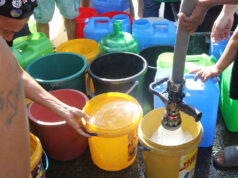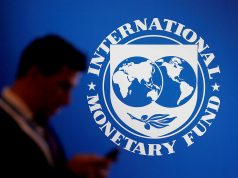Factory activity drops to 3-month low
THE Philippine capital’s return to a stricter lockdown in the first two weeks of August dampened manufacturing activity, which fell to a three-month low, IHS Markit said on Tuesday.
The IHS Markit Philippines Manufacturing Purchasing Managers’ Index (PMI) slid to 47.3 last month from 48.4 in July, remaining below the 50-mark threshold that separates growth from contraction. August was the sixth straight month of declining factory output,
“The Philippines manufacturing sector headed into a steeper downturn in August as quarantine measures in a number of provinces were tightened. New orders fell sharply, as the latest PMI survey data indicated a second consecutive drop in production,” the statement read.
Metro Manila and the provinces of Cavite, Laguna, Rizal and Bulacan reverted to modified enhanced community quarantine (MECQ) from Aug. 2 to 18, in an effort to curb the rise in coronavirus infections. Laguna, Cavite and Rizal are part of the key industrial region of Calabarzon.
The headline PMI measures manufacturing conditions through the weighted average of five indices: new orders (30%), output (25%), employment (20%), suppliers’ delivery times (15%) and stocks of purchases (10%).
The Philippines posted the second lowest PMI reading among six ASEAN countries, worse than the regional average of 49. Myanmar and Indonesia both saw factory output expand in August, with PMI readings of 53.2 and 50.8, respectively.
IHS Markit cited the contraction in output levels for a second straight month, and the continued decline in new orders since March when the coronavirus pandemic escalated.
The re-imposition of the MECQ negatively impacted demand in August, as some businesses had to cut operating capacity.
“New work inflows contracted sharply as movement was restricted, while some sectors were forced to operate at reduced capacity. The fall in new orders was the fastest seen in three months. Export sales also declined, but only at a modest rate as global COVID-19 restrictions were generally relaxed,” IHS Markit said.
The August drop in manufacturing production was faster than July’s, but softer than the contraction seen from March to May when most parts of the country were under a strict lockdown.
Employment dropped to its slowest pace in three months, but IHS Markit said job losses were still noticeable.
“Job losses remained apparent as firms continued to trim capacity at a steep rate to adapt to the new economic environment. Stocks were also reduced, extending the run of depletion to six months,” David Owen, an economist at IHS Markit, was quoted as saying.
IHS Markit noted the lengthening delivery times at manufacturing companies, which started in August 2019. The quarantine restrictions made it harder for companies to procure raw materials in time, it added.
Input prices climbed at the quickest pace since February 2019, as suppliers reported shortages and costs of imported goods rose.
This resulted in some factories increasing output charges to pass the higher costs onto consumers, but only at a “modest” uptick as businesses continue to offer discounts to boost sales.
“The outlook for the manufacturing sector remained subdued in August and was broadly in line with that seen in July. More businesses predict that output will improve in the year ahead than those expecting a decline, but confidence was much weaker than the series trend,” it said.
Mr. Owen said the sluggish business confidence may signal post-pandemic recovery remains uncertain.
Robert Dan J. Roces, chief economist at Security Bank Corp., said the decline in PMI was “relatively small” considering the MECQ lasted only two weeks. The National Capital Region remains under general community quarantine (GCQ) until Sept. 30.
“As we transition to GCQ, there’s a high chance that the PMI could bounce back near or above 50 to register a rebound while trade and production slowly improve,” Mr. Roces said via e-mail Tuesday.
Despite a broader recovery in emerging Asian economies, manufacturing activity in the Philippines dipped last month due to the tighter quarantine rules, said Capital Economics economist Alex Holmes.
“We suspect this (decline in PMI) will be short-lived for Vietnam, where the virus appears to already be back under control. But things are likely to take longer to recover in the Philippines,” Mr. Holmes said in a note on Tuesday, referring to Vietnam’s PMI of 45.7.
“Looking ahead, a slow recovery in external demand is likely to drive further small improvements in conditions for Asia’s export-orientated manufacturers. That said, it is still likely to be a long time before output consistently returns to pre-crisis levels,” he added.
The think tank Oxford Economics also has a dim outlook for the Philippine manufacturing sector.
“In our view, recovery prospects vary greatly across the region, with China, South Korea and Taiwan firmly in the lead, and India and Philippines trailing far behind in our forecasts,” Oxford Economics said in a note Tuesday. — B.M. Laforga




